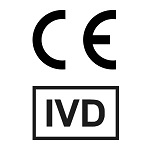S6 Ribosomal Protein, phosphorylated (Ser235/236)
Referência R2031-29A-100ul
Tamanho : 100ul
Marca : US Biological
R2031-29A Rabbit Anti-S6 Ribosomal Protein, phosphorylated|(Ser235/236)
Clone Type
PolyclonalHost
rabbitSource
humanSwiss Prot
P62753Isotype
IgGGrade
PurifiedApplications
IC IF WBCrossreactivity
Hu Mo RtShipping Temp
Blue IceStorage Temp
-20°CTo effectively promote growth and cell division in a sustained manner, growth factors and mitogens must upregulate translation. Growth factors and mitogens induce the activation of p70 S6 kinase, which in turn phosphorylates the S6 ribosomal protein. Phosphorylation of S6 correlates with an increase in translation, particularly of mRNAs with an oligopyrimidine tract in their 5' untranslated regions. This group of mRNAs (5'TOP) encodes proteins involved in cell cycle progression and proteins that are part of the translational machinery, such as ribosomal proteins and elongation factors. The main in vivo S6 ribosomal protein phosphorylation sites, including Ser235, Ser236, Ser240 and Ser244, are located within a 19 amino acid region in the S6 carboxy-terminus.||Applications: |Suitable for use in Immunofluoresence/Immunocytochemistry and Western Blot. Other applications not tested.||Recommended Dilutions:|Western Blot: 1:1000. Good for 10 mini blots.|Immunofluorescence (IC): 1:400-800. Fixative: 10% neutral buffered formalin|Optimal dilutions to be determined by the researcher.||For Western blots, incubate membrane with diluted antibody in 5% BSA, 1X TBS, 0.1% Tween-20 at 4°C with gentle shaking, overnight. ||Storage and Stability:|May be stored at 4°C for short-term only. Aliquot to avoid repeated freezing and thawing. Store at -20°C. Aliquots are stable for 12 months after receipt. For maximum recovery of product, centrifuge the original vial after thawing and prior to removing the cap.






